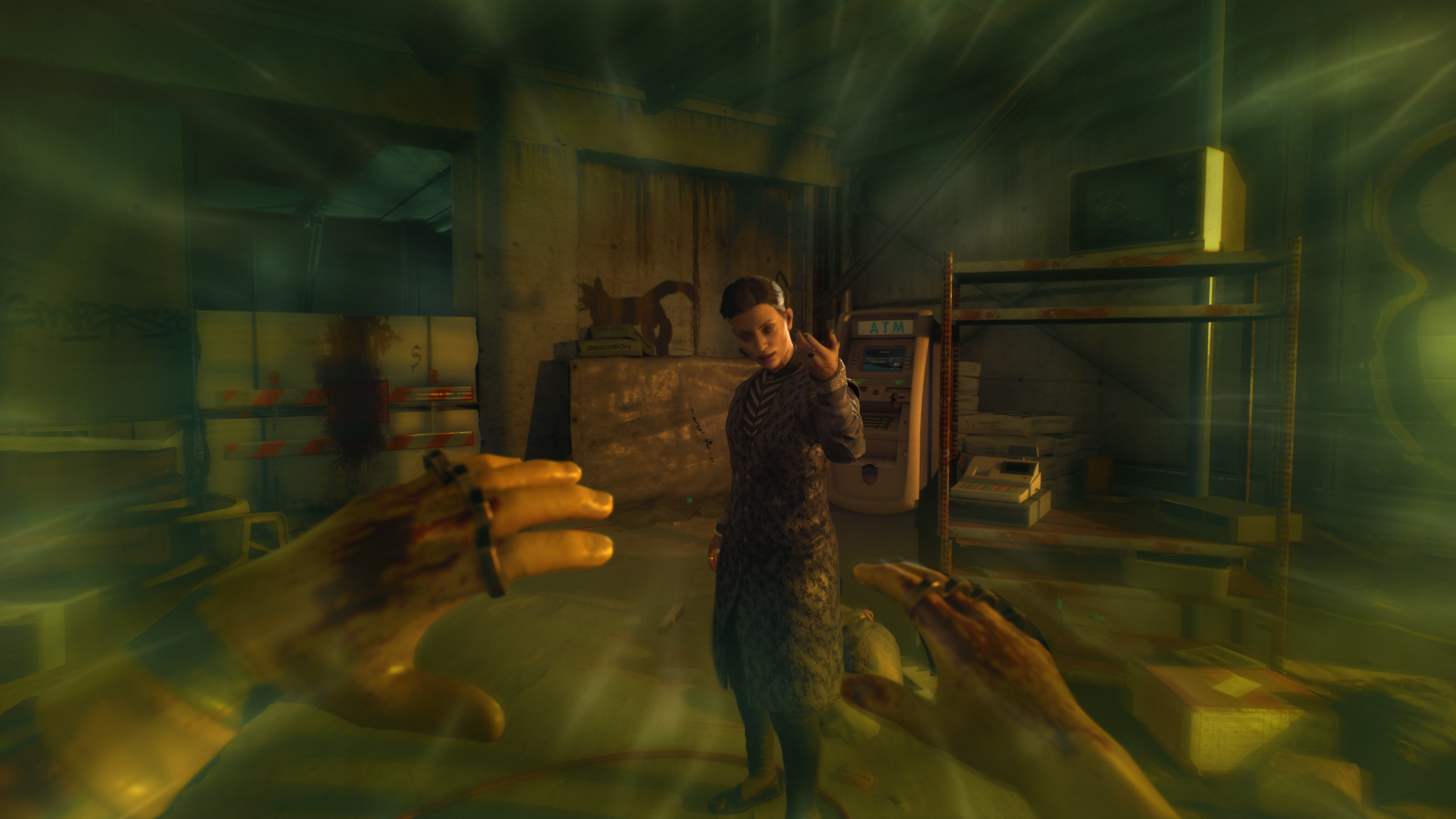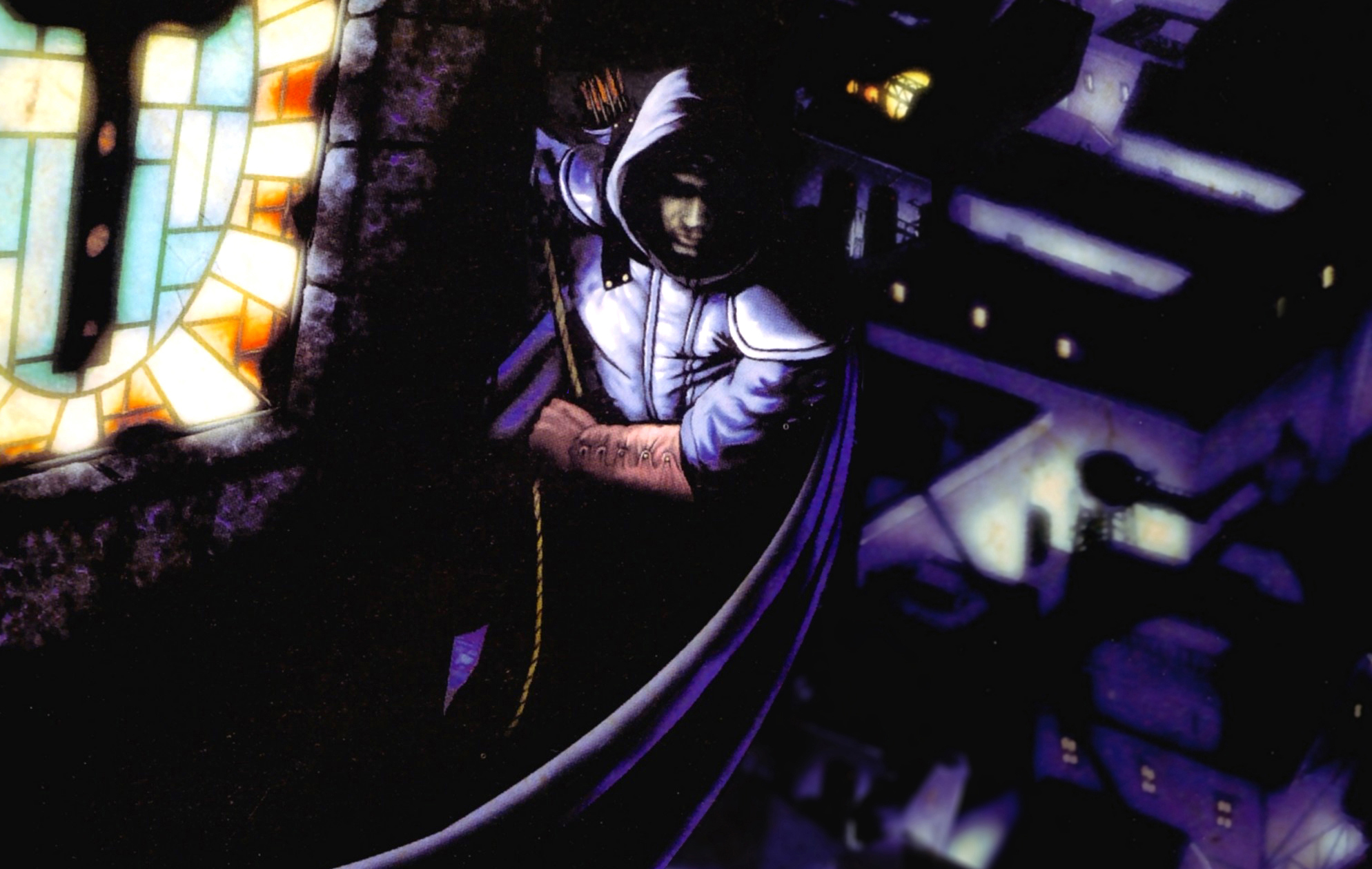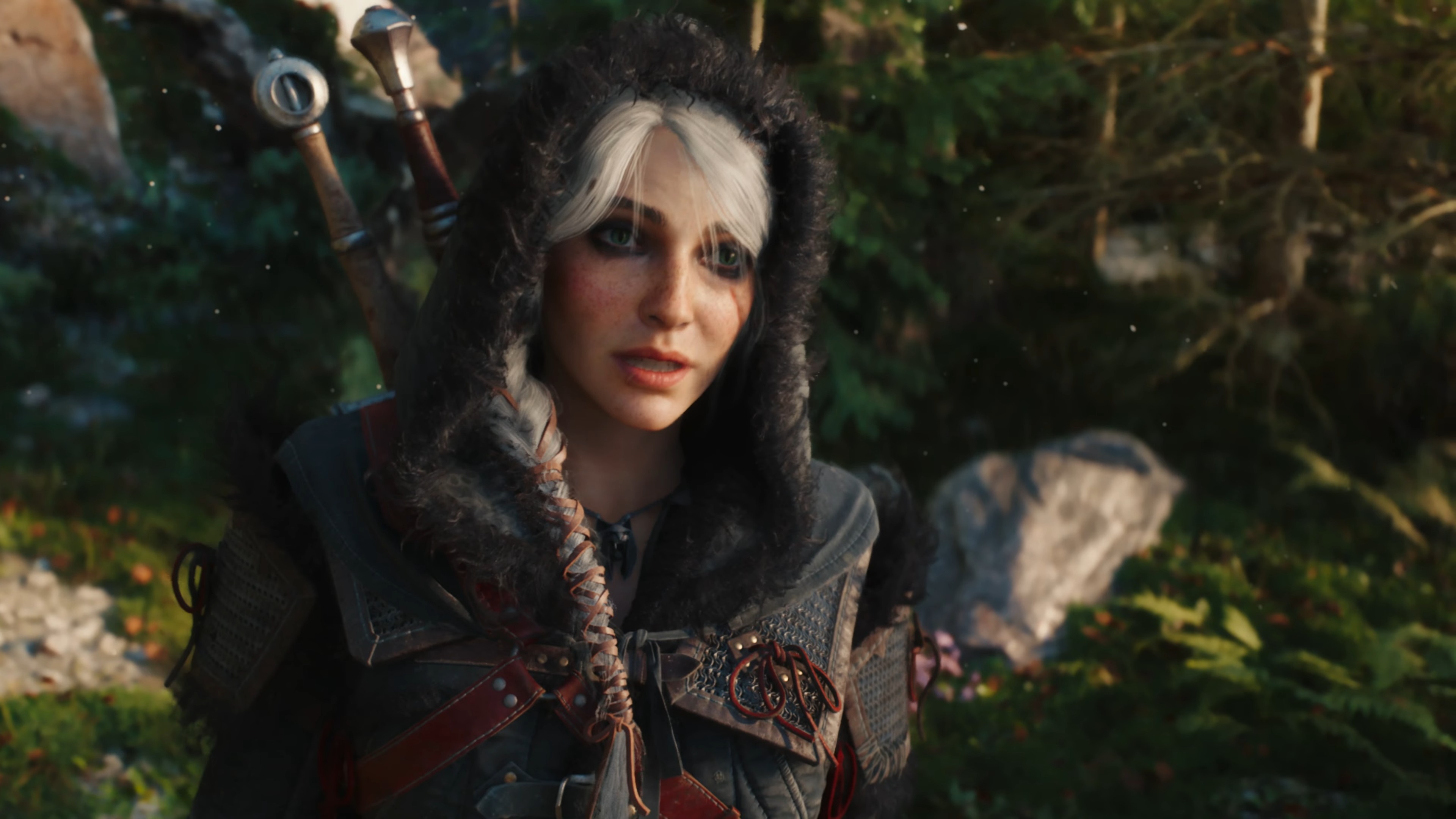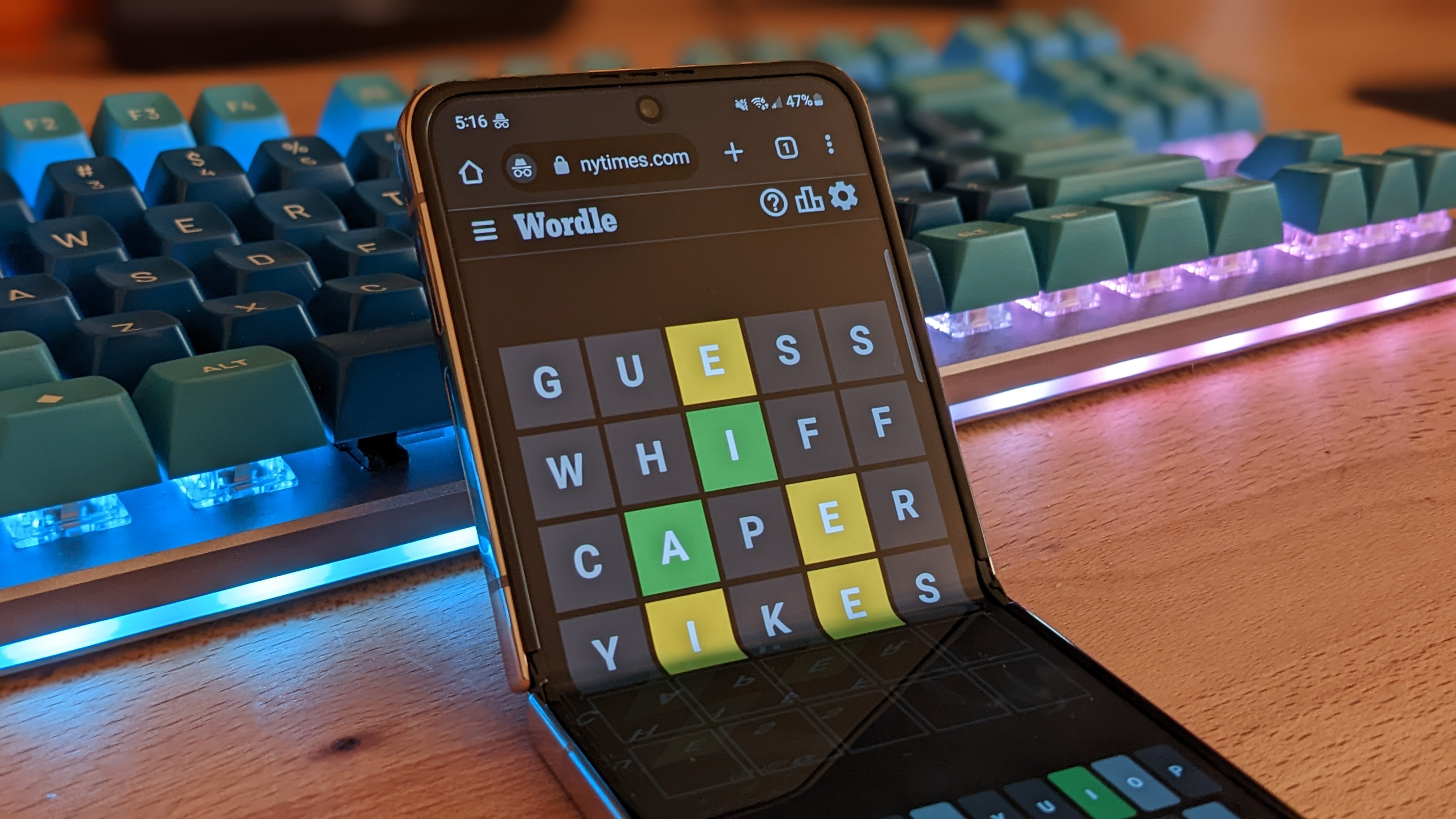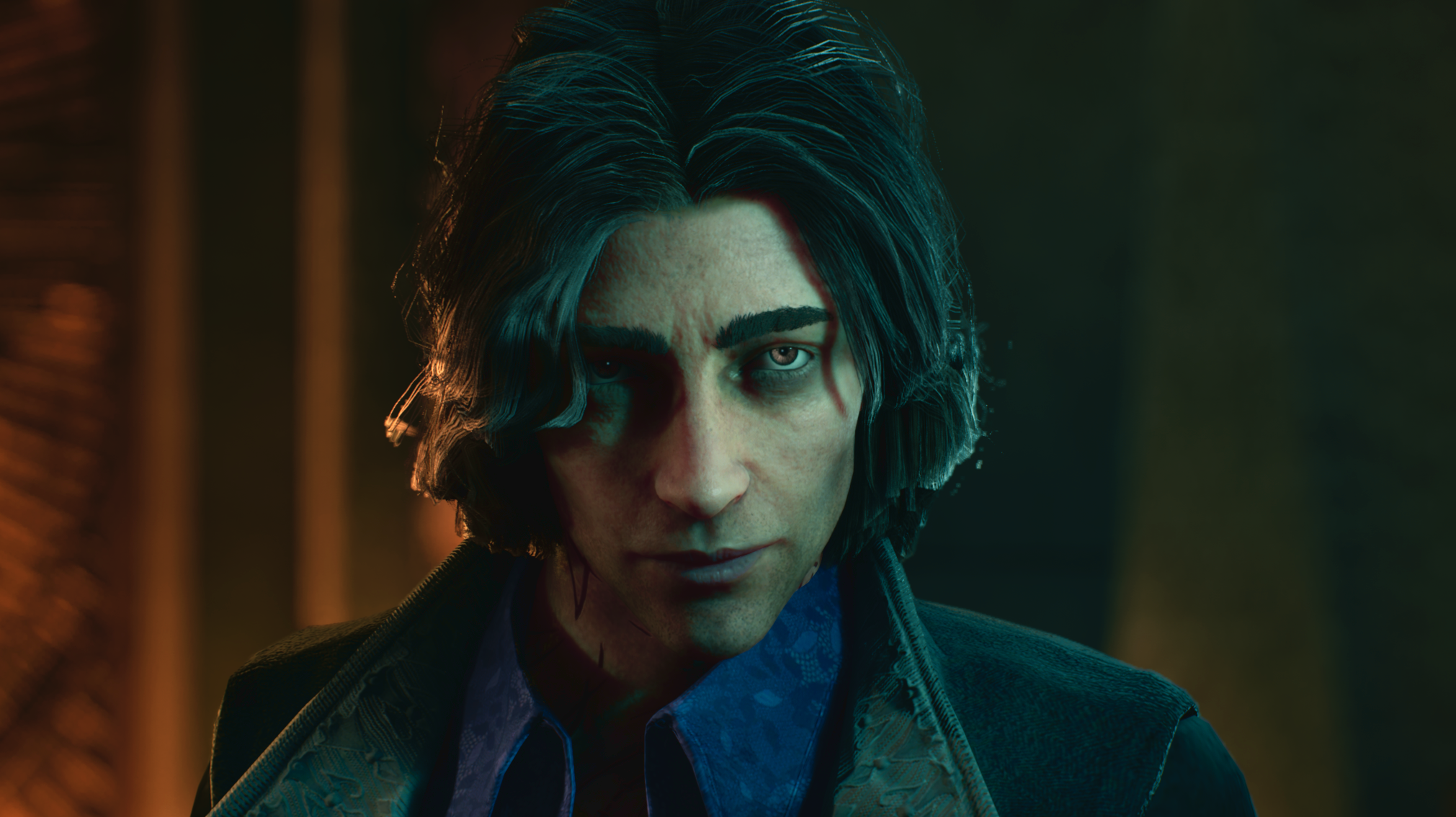
Ride share.
The World of Darkness features a multitude of distinct vampire clans, each with their own unique cultures and powers. In The Chinese Room’s Vampire: The Masquerade – Bloodlines 2, you can prowl Seattle as one of four: the Brujah, Tremere, Banu Haqim and Ventrue. It’s a strong selection, and from what I experienced in my exclusive Bloodlines 2 hands-on, they’re all shaping up to be a lot of fun to play.
But there’s a notable omission in this list: the fan-favourite Malkavian clan. These tormented seers were the standout clan in the first Bloodlines, with their eccentric dialogue options and penchant for seeing what others cannot. So it’s a shame, then, that protagonist Phyre won’t be Malkavian, but I’ve still got good news for fans of the clan.
If you’ve been keeping up with The Chinese Room’s dev diaries, or you read my hands-on, you’ll know that Phyre has a constant companion: Fabien. He’s a vampire, a private investigator, and he’s stuck in your head, serving as your guide and confidant. He’s also a Malkavian.
While Malkavians are often depicted as deranged, The Chinese Room presents your passenger as pretty put-together. He doesn’t spout riddles and confusing prophecies, and the impact of the Malkavian gift/curse is a bit more subtle.
“It’s part of how he is dealing with the Malkavian curse,” game director Alex Skidmore told me in an interview earlier this year. “He’s constructed this story he tells himself.” He uses his detective persona to maintain a grip on reality, which also makes him better able to serve as your guide through the modern world. But that doesn’t mean you should rely on him too much.
“There are points in the story where there are things that Fabien will tell you that are clearly not true,” said Skidmore. “But he believes them. And that’s really interesting because then you start to question, because he’s also your guide, what can I trust?”
From the time I spent with Fabien, he’s clearly nuanced, intriguing and eccentric, but it strikes me that the absence of that Bloodlines 1 zaniness is to the game’s benefit. If you had that voice in your head, it would probably start to grate, after a while.
The Chinese Room’s approach also feels more sympathetic. When the original Bloodlines came out more than 20 years ago, we hadn’t fully reckoned with how media like videogames was stigmatising mental illness. I don’t think developer Troika was poking fun at schizophrenia, but I think it’s perfectly valid to be uncomfortable when a character presenting the symptoms of real mental illness is portrayed as wacky and weird—their armour design is certainly an acquired taste.
With Fabien, Bloodlines 2 avoids this. And there’s a practical element to this characterisation, too.
“What I find particularly interesting is that [Malkavians] are seeing the world through a different filter, through their own,” narrative director Ian Thomas told me, “and there is this notion of sages or prophets and seeing visions, and in some cases, believing those visions. And there’s also the Cassandra thing of ‘I believe this is true, and nobody else believes me’. What was less interesting about the more schizophrenic or scattered [approach] is it’s very difficult to have a through line of a viewpoint.”
Given Fabien’s role in the game, it’s helpful to have him a bit more centred than, say, the Malkavian protagonist in Bloodlines 1. The way Fabien sees the world, the way he tries to understand it and engage with people—humans as well as vampires—means that he also serves as Phyre’s connection to humanity.
You can find out more about how The Chinese Room has approached Bloodlines 2’s narrative and characters in this month’s cover feature in the PC Gamer magazine, which is on sale now. Bloodlines 2, meanwhile, is due out this October.
